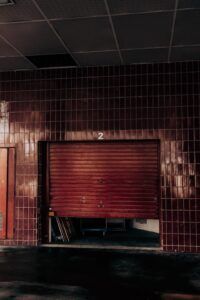When overhead garage doors stop working properly, it can be a major hassle for a variety of reasons. As a homeowner, you and your family depend on your garage door for storing vehicles and tools, and for the majority of us, it also serves as the main entrance to our houses. A malfunctioning garage door can severely disrupt the day-to-day operations of commercial garage operators.
We’ve identified eight distinct problems with garage door systems that must be fixed immediately. You should not attempt to fix a garage door problem if it impacts the door’s ability to open and close.
If your garage door opener is showing any of these eleven symptoms, it may be time to get it repaired:
1. You can’t open or close the garage door.
Though it may initially seem easy, troubleshooting a stuck garage door can be rather involved. Some overhead garage door issues are easy to identify and fix independently, while others indicate a more serious problem that calls for a professional with the right equipment to fix. There are numerous variables and possible faults that can cause a door to not open or close:
- There is no power coming from the source.
- The door sensor eye is being blocked.
- There is a problem with the extension or torsion springs.
- The garage door isn’t even on its tracks!
- The door isn’t opening or closing properly.
- The sensitivity of the door’s reverser should be adjusted.
- The cables are either loose or broken.
- The limit settings and other critical parameters are incorrect.
- There is a lock on the door.
Your door’s ability to open and close has minor and major problems. If you can’t determine the cause of the malfunction, it is likely necessary to get a quick garage door repair fountain valley.
2. The garage door opens slowly.
A network of sensors, pulleys, rails, and springs allows garage doors to open and close. Any of these mechanisms can cause slow opening or stalling of the door in either the up or down position. Sometimes, fixing an issue requires a little lubricant and a tweak to the speed settings.
When the problem is more serious, repair by a trained expert is usually necessary. A misaligned or off-track door, damaged cables, or tension springs are other potential causes of stalling or delays. Repairs in such situations are typically too complex for you to manage independently.
3. The garage door cannot be lifted manually when the release is not in use.
If your door is malfunctioning, you might try disengaging the opener to open it manually. If the door remains unresponsive, it becomes even more inconvenient, especially while your car is parked in the garage. In case of a power outage, malfunctioning overhead lift motor, or the necessity of manual operation, the majority of modern garage door openers are equipped with a bypass switch.
The manual release, sometimes in the form of a rope with a handle, allows for manual lifting by disengaging the automatic trolley when pushed. If your door’s movable metal components operate well, it should open with little effort. After deactivating the emergency release, if you still can’t lift the door by hand, it could be due to damaged springs or cables.
4. The garage door isn’t closing all the way.

Just as annoying as it is when your garage door won’t open is when it won’t close completely. The extent to which it descends determines the level of security it provides to your garage. Weatherstripping allows conditioned air to escape and severe heat and moisture to seep inside when the slightest break develops and cannot seal snugly against the floor.
There are instances when you can handle this problem independently. For instance, the distance setting on your garage door opener can be incorrect. If you set it too high, the garage door won’t close to the floor. Door reversals or partial stops during closing can be caused by misaligned photo-eye safety sensors near your door’s bottom.
If the problem persists after trying these simple solutions, it may be time to call in the experts.
5. The automatic door opener is not working.
Until they malfunction, automatic garage door openers are wonderful things. If the problem is caused by a power outage or dead batteries, you can fix it fast. When the opener unit stops working, it’s usually because of worn-out gear or the motor. Therefore, a complete replacement is necessary—not always a dead battery.
Due to the complexity of the installation and the risks involved, it is best to have a professional from garage door services handle the job. On top of that, if you install the opener yourself, the warranty will likely be voided.
6. There is damage to the garage door rails or the extension springs.
A broken spring is one of the worst things to happen to a garage door. Torsion or extension springs are used to open and close all garage doors. You’ll find extension springs along the tracks on either side of the garage door, and a torsion spring will rest centrally above the door. When the door is closed, both are subjected to a great deal of strain, which generates the force required to raise the door. The door may remain locked if the spring breaks or the coils are old.
The door’s mechanical movement relies on its springs; thus, it’s important to have a pro fix them immediately. It only takes a small malfunction for the door to slam shut just when you least expect it.
In the end!












